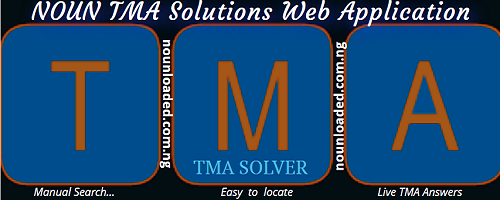Last Updated: 28th March, 2025 | 05:58:13 PM
Business Plan Writing Services in Nigeria
A business plan is a detailed document that outlines the goals, strategies, and operational aspects of a business. It's essential for guiding a business's growth, securing funding, and communicating the business's vision to stakeholders. Below is a comprehensive guide to writing a business plan.
1. Executive Summary
- Business Name and Location: Briefly introduce your business, including its name, location, and the products or services it offers.
- Mission Statement: A concise description of the business's purpose and goals.
- Vision Statement: Long-term objectives and aspirations of the business.
- Products/Services: Brief overview of what the business offers.
- Market Opportunity: Summary of the market needs that the business intends to meet.
- Financial Summary: High-level overview of financial projections, such as revenue, profit, and funding needs.
- Key Milestones: Important past and future milestones.
2. Company Description
- Business Overview: Detailed description of the business, its structure, and its history.
- Legal Structure: Type of business entity (e.g., sole proprietorship, partnership, LLC, corporation).
- Location and Facilities: Description of the physical location(s) and facilities.
- Mission and Vision: Expanded discussion on the mission and vision of the business.
- Business Objectives: Specific, measurable goals the business aims to achieve.
3. Market Research and Analysis
- Industry Overview: Analysis of the industry, including current trends, growth potential, and market size.
- Target Market: Detailed description of your ideal customers, including demographics, needs, and buying behavior.
- Market Size and Growth: Statistics and projections on market size and growth.
- Competitive Analysis: Analysis of key competitors, their strengths, weaknesses, and market positioning.
- Market Trends: Discussion of relevant trends that could impact the business.
4. Organization and Management
- Organizational Structure: Diagram and description of the company's organizational hierarchy.
- Ownership: Information about the owners of the business, including their background and experience.
- Management Team: Profiles of key members of the management team, their roles, and their qualifications.
- Advisors and Board Members: Information on any external advisors or board members.
5. Products and Services
- Product/Service Overview: Detailed description of the products or services offered by the business.
- Unique Selling Proposition (USP): Explanation of what makes your products/services unique.
- Product Lifecycle: Discussion of where your products/services are in their lifecycle.
- Research and Development (R&D): Plans for innovation and future product development.
- Intellectual Property: Information on patents, trademarks, copyrights, or other intellectual property.
6. Marketing and Sales Strategy
- Marketing Strategy: Overview of the marketing strategy, including brand positioning, messaging, and marketing channels.
- Sales Strategy: Detailed description of the sales process, including sales channels and tactics.
- Customer Acquisition: Strategies for attracting new customers.
- Customer Retention: Strategies for keeping existing customers and building loyalty.
- Pricing Strategy: Explanation of how products/services will be priced, including any pricing models.
- Promotion Strategy: Plans for promotions, advertising, and other marketing activities.
7. Operations Plan
- Business Model: Explanation of how the business creates, delivers, and captures value.
- Operations Strategy: Detailed plan for the day-to-day operations of the business.
- Location and Facilities: Specifics about the physical or virtual locations where the business operates.
- Supply Chain Management: Information on suppliers, partners, and logistics.
- Technology: Overview of the technology and tools needed to operate the business.
- Production Plan: If applicable, details on how products will be produced.
8. Financial Plan
- Revenue Model: Explanation of how the business will generate revenue.
- Financial Projections: Detailed financial statements, including income statements, cash flow statements, and balance sheets for the next 3-5 years.
- Break-even Analysis: Calculation of when the business will become profitable.
- Funding Requirements: How much funding is needed, and how it will be used.
- Use of Funds: Detailed explanation of how the funds will be allocated.
9. Risk Analysis
- SWOT Analysis: Detailed examination of the business's strengths, weaknesses, opportunities, and threats.
- Risk Factors: Identification of potential risks and challenges.
- Risk Management Strategies: Plans for mitigating identified risks.
- Contingency Plans: Backup plans for critical business functions.
10. Appendices
- Supporting Documents: Include any additional documents that support your business plan, such as resumes, legal agreements, product images, or market research data.
- Glossary: Definitions of any technical terms used in the plan.
- References: List of references or sources cited in the plan.
Tips for Writing a Business Plan
- Clarity and Conciseness: Write in clear, concise language. Avoid jargon unless it's necessary for your industry.
- Data-Driven: Use data to back up your claims, particularly in the market analysis and financial sections.
- Visual Aids: Incorporate charts, graphs, and tables to present data clearly.
- Professional Format: Ensure the document is professionally formatted, with consistent fonts, headings, and spacing.
- Customization: Tailor the plan to your audience, whether it's investors, partners, or internal stakeholders.
A well-crafted business plan is a powerful tool for guiding your business's growth and securing the resources you need to succeed. If you need help with specific sections or further guidance
·
NOUN Plagiarism Checker (Turnitin)
·
Plagiarism Removal Service in Nigeria (National Open University, NOUN)
·
Turnitin Reports: How to remove plagiarism on NOUN Project Material
·
Turnitin plagiarism Checker/Services for National Open University
of Nigeria, NOUN
·
National Open University of Nigeria's Project Administration System (PAS)
·
National Open University, NOUN Project Format
Meet Professional Writers for your Business Plan Writing
Latest Posts:
Facts about National Open University of Nigeria, N...
19th April, 2025
National Open University of Nigeria, NOUN Business...
14th April, 2025
GST302: Business Creation & Growth...
9th March, 2025


.png)





